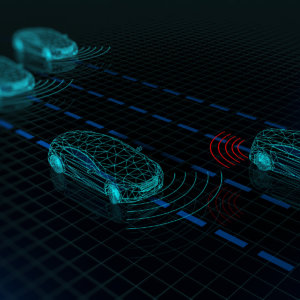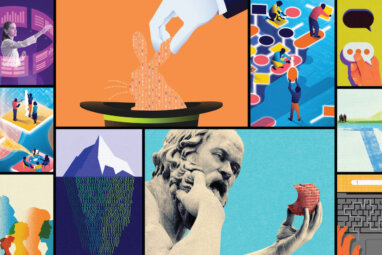Four Management Lessons From Self-Driving Cars
Though much attention has been centered on self-driving cars, business is missing the key lessons about AI that the evolution of the automobile has to offer.
Topics
It is hard to discuss artificial intelligence (AI) without mentioning self-driving cars. A typical perspective is to look forward to a driverless future, marveling at the possibilities and implications for how we work… or not.
However, there may be more to learn from self-driving cars by looking in the rearview mirror. What can we learn from the path toward autonomous cars about the road to business adoption of artificial intelligence?
Self-driving cars did not start out as completely autonomous; similarly, AI will affect business gradually.
Fantasizing about driverless cars entices us to think about complete replacement, instead of assistance. Even the phrase “self-driving car” encourages this.
But the word “automobile” derives from words meaning automatic motion — the original Benz Patent Motor Car produced in 1886 itself represented a huge step forward from prior locomotion, but it was just the beginning. Since that time, we’ve moved from hand crank starts to electric ignition, from hand throttles to adaptive cruise control, from double clutch to automatic transmission. And AI continues to add to the progress through lane assistance, smart parking, navigation systems: each of these a small step toward self-driving vehicles.
Similarly, modern jobs are complex mixtures of many different types of tasks, many of which have been automated — with more to come. Yet most jobs won’t be completely replaced; they will be progressively augmented in ways that allow refinement instead of outright substitution of machines in place of people.
AI will augment jobs, much as cruise control and back-up cameras incrementally improved the automobile. So the question is not “Which jobs will be replaced?” but rather, “How will jobs be increasingly assisted by AI?”
Self-driving is incredibly difficult; AI can be effective on simpler problems.
Some tasks will be easier for artificial intelligence than other tasks. For cars, early improvements made rapid gains quickly. It didn’t take long for windshields to eliminate unpleasantness from wayward bugs and for electric ignitions to avoid the potential for broken arms from hand crank starters.
But recent AI-enabled progress has required far more technology and effort to achieve. Part of the motivation for driverless cars is the number of fatalities due to motor vehicles; there were an estimated 40,200 motor vehicle fatalities in the United States last year — the vast majority of which involved human errors in judgment.





